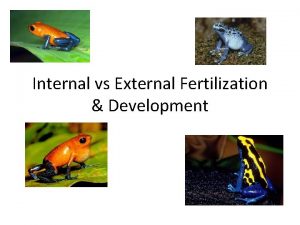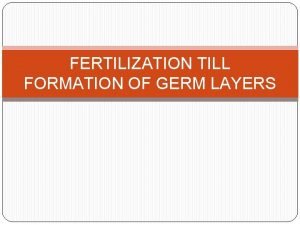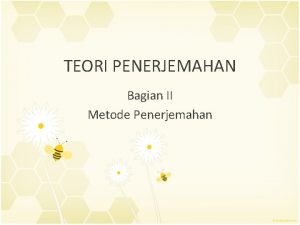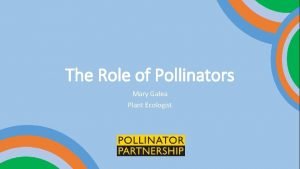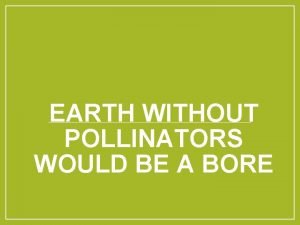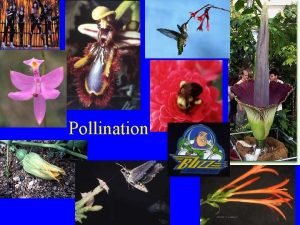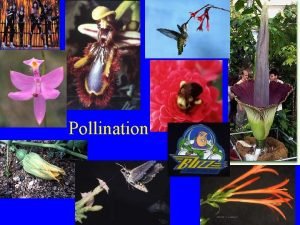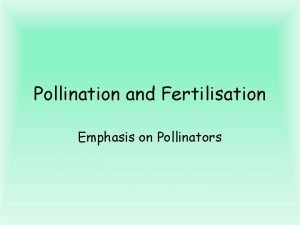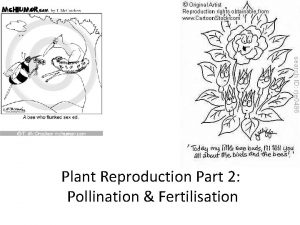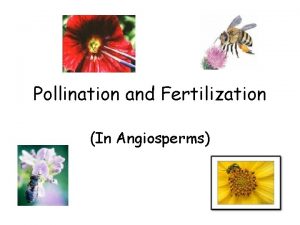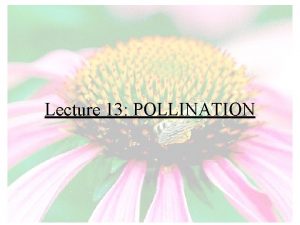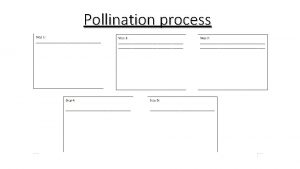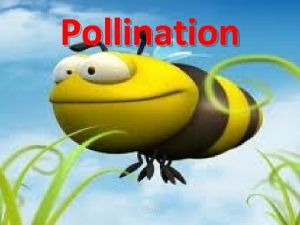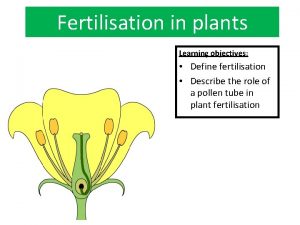Pollination and Fertilisation Emphasis on Pollinators Pollination Selfpollination









- Slides: 9

Pollination and Fertilisation Emphasis on Pollinators

Pollination Self-pollination • Pollen from the anther is transferred to the stigma

Cross Pollination • Pollen from the anther of one plant is transferred to the stigma of a different plant

Wind Pollinated Flowers Feature Reason small petals, often brown or dull green no need to attract insects no scent no need to attract insects no nectar no need to attract insects pollen produced in great quantities because most does not reach another flower pollen very light and smooth so it can be blown in the wind anthers loosely attached and dangle out to release pollen into the wind stigma hangs outside the flower to catch the drifting pollen stigma feathery or net like to catch the drifting pollen

Wind/Insect Pollination

Insect Pollinated Flowers Feature Reason large, brightly coloured petals to attract insects often sweetly scented to attract insects usually contain nectar to attract insects moderate quantity of pollen less wastage than with wind pollination pollen often sticky or spiky to stick to insects anthers firm and inside flower to brush against insects stigma inside the flower so that the insect brushes against it stigma has sticky coating pollen sticks to it

Fertilisation

What can I do? • Avoid using chemical sprays in the garden – There are many home made environmentally safe alternatives – check organic gardening books. • Look into “companion” planting – i. e. marigolds tend to keep root nematodes away from where they are planted. • Select plant species that attract pollinators. • Make your garden a miniature “nature preserve”

This powerpoint was kindly donated to www. worldofteaching. com http: //www. worldofteaching. com is home to over a thousand powerpoints submitted by teachers. This is a completely free site and requires no registration. Please visit and I hope it will help in your teaching.
 Pollination fertilisation seed dispersal germination
Pollination fertilisation seed dispersal germination Bird external fertilization
Bird external fertilization Horse internal or external fertilization
Horse internal or external fertilization Formation of notochord ppt
Formation of notochord ppt Contoh word for word translation
Contoh word for word translation Role of pollinators
Role of pollinators Pollinators
Pollinators Floral formula of euphorbiaceae
Floral formula of euphorbiaceae Pollination syndrome
Pollination syndrome During pollination pollen is transferred from a stamen to a
During pollination pollen is transferred from a stamen to a

